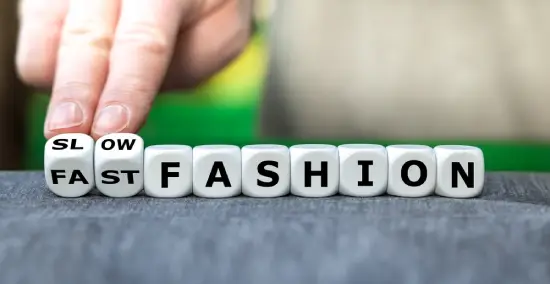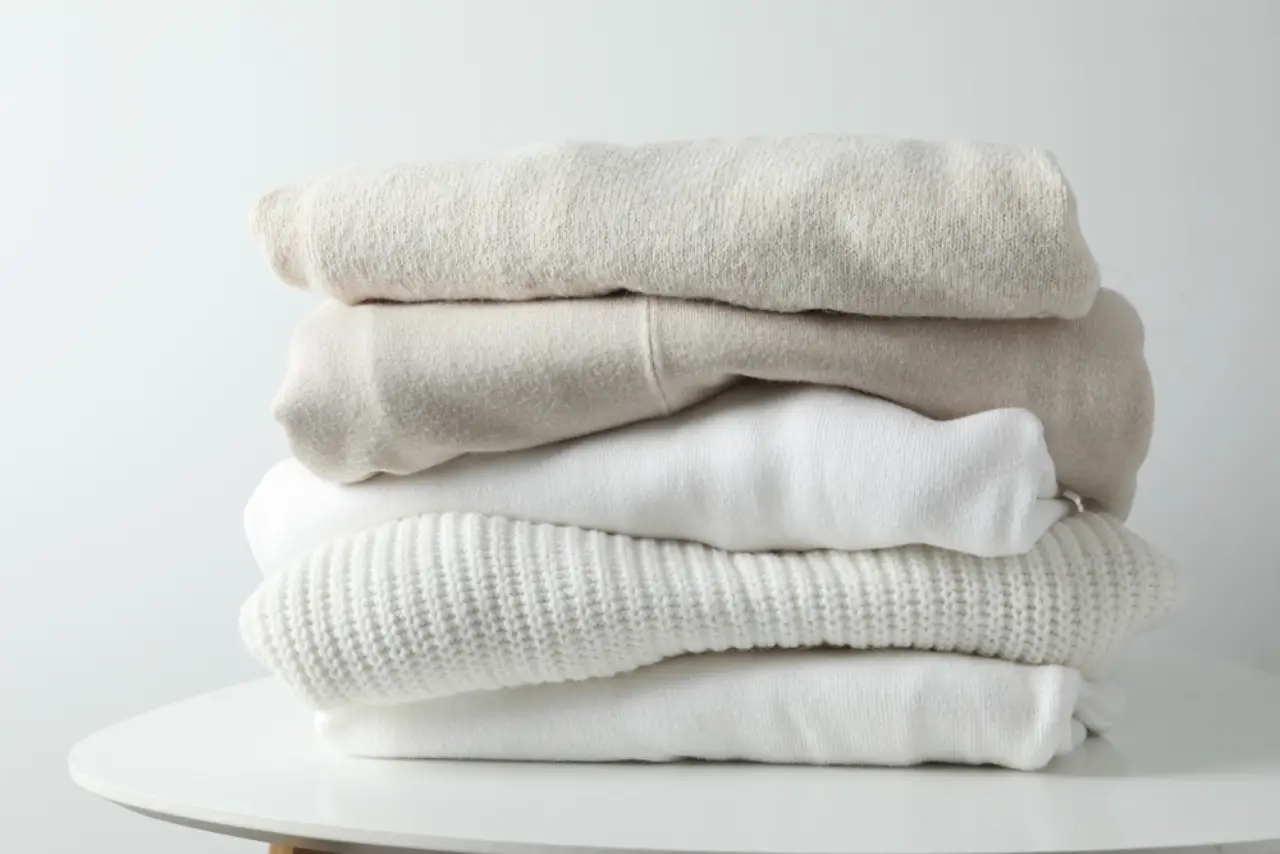The fashion industry is a powerful force, influencing not only our wardrobes but also our planet. In recent years, two opposing approaches to fashion have emerged: fast fashion and sustainable fashion. Understanding these two concepts is crucial for making informed choices about what we wear and the impact it has on the world. This blog delves into the intricate details of fast fashion vs sustainable fashion, highlighting their differences, implications, and the broader impact on society and the environment.
 The fashion industry is often seen through the lens of trends and seasons, but behind the scenes, two very different approaches shape how clothing is made and consumed: fast fashion and Slow Fashion. While fast fashion focuses on quickly delivering the latest trends at low prices, Slow Fashion champions a more deliberate and sustainable approach, prioritizing quality and ethical practices. Understanding the difference between these two models involves looking at their production processes, environmental impact, and the values they promote.
The fashion industry is often seen through the lens of trends and seasons, but behind the scenes, two very different approaches shape how clothing is made and consumed: fast fashion and Slow Fashion. While fast fashion focuses on quickly delivering the latest trends at low prices, Slow Fashion champions a more deliberate and sustainable approach, prioritizing quality and ethical practices. Understanding the difference between these two models involves looking at their production processes, environmental impact, and the values they promote.
What is the Difference Between Fast Fashion and Slow Fashion
 The fashion industry is often seen through the lens of trends and seasons, but behind the scenes, two very different approaches shape how clothing is made and consumed: fast fashion and Slow Fashion. While fast fashion focuses on quickly delivering the latest trends at low prices, Slow Fashion champions a more deliberate and sustainable approach, prioritizing quality and ethical practices. Understanding the difference between these two models involves looking at their production processes, environmental impact, and the values they promote.
The fashion industry is often seen through the lens of trends and seasons, but behind the scenes, two very different approaches shape how clothing is made and consumed: fast fashion and Slow Fashion. While fast fashion focuses on quickly delivering the latest trends at low prices, Slow Fashion champions a more deliberate and sustainable approach, prioritizing quality and ethical practices. Understanding the difference between these two models involves looking at their production processes, environmental impact, and the values they promote.
Fast Fashion
It refers to a business model that focuses on quickly producing inexpensive clothing in response to the latest trends. This model is characterized by:- Rapid Production Cycles: Such brands often introduce new collections weekly or even daily. The goal is to replicate runway trends quickly and offer them at low prices.
- Low Costs and High Turnover: The emphasis is on keeping production costs low, which is often achieved through outsourcing to countries with lower labor costs. This results in garments made with cheap materials and poor craftsmanship.
- Disposable Culture: It encourages consumers to buy frequently and discard items after a short period. This creates a cycle of consumption where clothing is treated as disposable.
How to Spot a Fast Fashion Brand
Identifying such brands can be crucial for those looking to make more sustainable and ethical fashion choices. It is characterized by its rapid production cycles, trend-driven collections, and low prices, which often come at the expense of quality and ethical practices. Here are key indicators to help you spot a fast fashion brand:1. Frequent New Collections
Such brands are known for their quick turnaround times and frequent introduction of new collections. If a brand releases new items weekly or even daily, it’s a strong indicator of a fast fashion model. This constant influx of new styles is designed to keep consumers coming back for more.2. Low Prices
One of the most apparent signs is the price. These brands often offer clothing at very low prices, which is achieved by cutting costs in production and materials. If you notice exceptionally cheap clothing, it may be a fast fashion brand.3. Trendy Designs
Such brands focus on replicating the latest runway trends and popular styles. Their collections are often heavily influenced by current fashion trends rather than timeless or classic designs. If a brand’s offerings seem to change with every new fashion trend, it’s likely a fast fashion brand.4. Low-Quality Materials
The materials used are typically low-cost and may not be durable. Look for signs of poor craftsmanship, such as flimsy fabrics, loose stitching, and poorly finished garments. Fast fashion items often prioritize quantity over quality.5. Short Life Span of Clothing
It promotes a disposable culture where clothing is designed for short-term wear. If the clothing you find tends to wear out quickly or doesn’t hold up after a few washes, it’s a sign that it’s from a fast fashion brand.6. Large Scale Production
Fast fashion brands often produce items on a massive scale to meet high demand. This large-scale production typically involves outsourcing to countries with lower labor costs, where working conditions may be less regulated. If a brand operates with a high volume of production, it’s likely part of the fast fashion industry.7. Minimal Information on Ethical Practices
Such brands often lack transparency about their production processes, labor practices, and sourcing of materials. If a brand does not provide information about its commitment to ethical practices or sustainability, it might be a fast fashion brand.8. Aggressive Marketing and Sales Tactics
Such brands frequently use aggressive marketing strategies, including frequent sales, discounts, and promotional campaigns, to drive consumer purchases. If a brand relies heavily on marketing tactics to push sales, it could be indicative of a fast fashion approach.Slow Fashion
Slow fashion, in contrast, advocates for a more thoughtful and sustainable approach to clothing. Key aspects of slow fashion include:- Quality Over Quantity: Slow fashion focuses on producing high-quality garments that are designed to last. Emphasis is placed on craftsmanship, durability, and timeless design.
- Ethical Practices: Slow fashion often involves fair labor practices, ensuring that workers are paid fairly and work under safe conditions. It also supports local and small-scale production.
- Environmental Responsibility: Slow fashion prioritizes eco-friendly materials and processes, reducing waste and minimizing the environmental impact. This can include using organic fabrics, recycling, and adopting zero-waste techniques.
How to Spot a Sustainable Fashion Brand
Recognizing a slow fashion brand involves identifying key characteristics that set it apart from the fast fashion model. Slow fashion emphasizes quality, sustainability, and ethical practices, and its approach to clothing production and consumption reflects these values. Here’s how to spot a slow fashion brand:1. Focus on Quality
Slow fashion brands prioritize high-quality materials and craftsmanship. Look for well-made garments with attention to detail, such as durable fabrics, precise stitching, and thoughtful design. Clothing that is built to last and withstand regular wear is a hallmark of slow fashion.2. Ethical and Transparent Practices
Slow fashion brands are often transparent about their production processes, sourcing, and labor practices. They may provide information about where and how their clothes are made, including details about fair wages, safe working conditions, and environmentally friendly practices. Check the brand’s website or product labels for information on ethical practices.3. Timeless and Classic Designs
Rather than focusing on fleeting trends, slow fashion brands offer timeless and classic designs that are intended to remain stylish beyond a single season. If a brand’s collections feature versatile pieces that can be worn for years, it’s a sign of slow fashion.4. Sustainable Materials
Slow fashion brands use sustainable and eco-friendly materials, such as organic cotton, recycled fabrics, or natural fibers. They may also employ low-impact dyes and environmentally responsible production methods. Look for certifications or labels that indicate the use of sustainable materials.5. Limited Production Runs
To avoid overproduction and reduce waste, slow fashion brands often produce clothing in limited quantities. This practice ensures that items are not mass-produced and helps to maintain exclusivity and reduce the environmental impact. If a brand offers limited edition or small-batch collections, it may be a slow fashion brand.6. Repair and Recycle Options
Many slow fashion brands offer repair services or encourage customers to recycle or upcycle their clothing. They may provide information on how to care for garments to extend their lifespan or offer programs for returning old items. Brands that support repair and recycling are committed to reducing waste and promoting sustainability.7. Investment in Local and Small-Scale Production
Slow fashion brands often support local artisans and small-scale production. They may collaborate with local craftspeople or produce their garments in smaller, independent factories. This approach helps to ensure fair labor practices and reduces the carbon footprint associated with long-distance shipping.8. Commitment to Social Responsibility
Slow fashion brands frequently engage in social responsibility initiatives, such as supporting fair trade, contributing to community projects, or advocating for environmental causes. If a brand is involved in activities that promote social and environmental well-being, it aligns with Slow fashion principles.9. Minimalist and Thoughtful Marketing
Slow fashion brands typically employ a minimalist and thoughtful approach to marketing, focusing on quality and value rather than constant promotions and discounts. Their marketing efforts often highlight the craftsmanship, sustainability, and ethical values behind their products.Conclusion
The debate between fast fashion vs sustainable fashion highlights a crucial choice facing modern consumers. Fast fashion offers immediate gratification with its trendy, affordable garments but at a significant cost to the environment and labor practices. On the other hand, sustainable fashion presents a more responsible alternative, focusing on quality, ethical production, and environmental stewardship. By understanding the differences between fast fashion vs sustainable fashion, individuals can make more informed choices that align with their values and contribute to a more sustainable future.FAQs
Why is Fast Fashion Not Sustainable?
Fast fashion is not sustainable due to its high environmental and social costs. The rapid production cycles and low-quality materials result in significant waste. Clothes are often made from synthetic fabrics that are not biodegradable, leading to pollution and landfill accumulation. Moreover, the low labor costs are usually achieved through exploitative practices, with workers facing poor working conditions and inadequate wages. The disposable nature also promotes a culture of excessive consumption, further exacerbating its environmental impact.What is Fast Fashion vs Slow Fashion?
Fast fashion vs sustainable fashion represents two contrasting approaches to clothing production and consumption. It is characterized by quick turnaround times, low costs, and trend-driven collections that encourage frequent purchases. In contrast, sustainable fashion emphasizes quality, sustainability, and ethical practices. It focuses on creating durable, timeless garments and promoting responsible consumption. While fast fashion aims for immediate gratification, slow fashion seeks to foster long-term value and environmental responsibility.Is Sustainable Fashion and Slow Fashion the Same?
Sustainable fashion and slow fashion are closely related but not identical. Sustainable fashion broadly encompasses practices aimed at reducing the environmental and social impact of clothing production. This includes using eco-friendly materials, minimizing waste, and ensuring fair labor practices. Slow fashion, on the other hand, is a specific approach within sustainable fashion that emphasizes high-quality, long-lasting garments and a more deliberate pace of production. While all slow fashion is sustainable, not all sustainable fashion is necessarily slow fashion.What is Known as Sustainable Fashion?
Sustainable fashion refers to an approach to clothing production and consumption that prioritizes environmental and social responsibility. This includes using sustainable materials, such as organic cotton or recycled fibers, and adopting ethical labor practices. Sustainable fashion aims to minimize waste, reduce carbon emissions, and promote fair treatment of workers. It also encourages consumers to make mindful choices, such as buying fewer but higher-quality items and supporting brands with transparent and responsible practices.Should Fast Fashion be Boycotted?
The decision to boycott depends on individual values and the impact one wishes to make. Boycotting it can be a powerful way to challenge the industry’s harmful practices and promote more ethical and sustainable alternatives. By choosing to support slow fashion and sustainable brands, consumers can help drive positive change in the industry. However, it’s important to recognize that not everyone has access to or can afford sustainable options, so advocating for systemic change and increased accessibility to ethical fashion is also crucial.Popular Search:
Clothing Exporter Men’s Designer Shirt Manufacturers Designer Shirt Manufacturer in India Men’s Shirt Manufacturers Men’s Shirt Manufacturers in India Private Label Shirt Manufacturers Best Private Label Clothing Manufacturers India Uniform Manufacturers School Uniform Manufacturer in India White Label Clothing Manufacturer White Label Clothing in India

